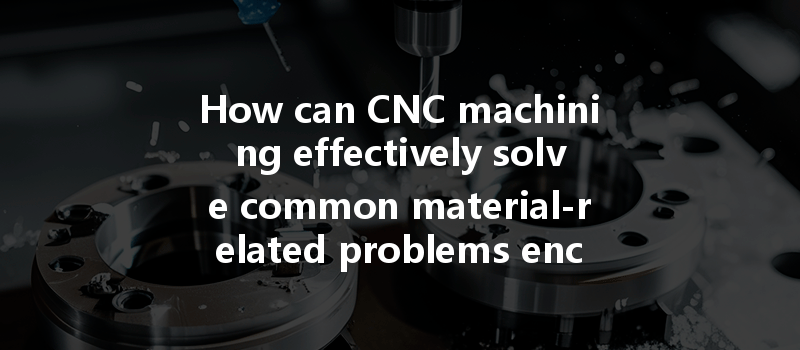Opening
Did you know that nearly 70% of machining failures can be traced back to issues related to material selection or handling? In the competitive landscape of manufacturing, where precision and quality reign supreme, understanding how to navigate common material-related problems in CNC machining could very well be the difference between success and costly mistakes. As manufacturers increasingly adopt CNC (Computer Numerical Control) technology, it’s essential to address these material challenges comprehensively.
Understanding CNC Machining
CNC machining is a highly advanced process that utilizes computer-controlled machines to shape and fabricate parts from various materials. This technique has revolutionized the manufacturing industry, allowing for unparalleled precision and repeatability. However, CNC machining is not without its challenges. Problems can arise due to the characteristics and behavior of different materials, leading to manufacturing inconsistencies, increased costs, and time delays.
Common Material-Related Problems in CNC Machining
Choosing the wrong material can lead to various machining issues, such as poor machinability, inadequate strength, or inappropriate thermal properties. To address this, manufacturers must establish clear requirements based on their end-use applications, including mechanical, thermal, and chemical properties.
Different materials exhibit varied wear patterns when subjected to machining operations. For instance, harder materials can lead to faster tool degradation, while softer materials may cause the cutting tool to become clogged. Understanding the machinability rating and appropriate cutting tools for each material can significantly reduce wear rates.
Heat generated during machining can cause thermal expansion and distortion of the material, leading to discrepancies in dimensions and tolerances. Effective cooling strategies, such as applying cutting fluids or optimizing feed rates, are crucial in mitigating these issues.
Achieving the desired surface finish can be challenging, especially with materials that have inconsistent properties. The right selection of cutting parameters, such as speed and feed rate, along with post-machining treatments—like sanding or polishing—are vital to attaining the required surface quality.
Using materials with inherent defects—such as inclusions, voids, or inconsistent grain structures—can lead to catastrophic failures during machining. Rigorous quality control measures, including material testing and certification, help ensure that only high-quality materials are utilized in the machining process.
Detailed Solutions for Common Material-Related Problems
Effective Material Selection
To mitigate the risks associated with material selection, manufacturers should employ the following strategies:
Tooling and Techniques for Machinability

To address tool wear and material interaction effectively:
Managing Thermal Effects
To combat the thermal challenges faced during machining, consider these practices:
Achieving Quality Surface Finishes
When it comes to surface finish issues:
Ensuring Material Quality
To tackle issues regarding material quality:
Navigating the complexities of CNC machining involves a multifaceted understanding of material characteristics and their implications on the machining process. By addressing common material-related issues through systematic strategies—such as effective material selection, tooling optimization, thermal management, quality surface finish techniques, and rigorous quality control—manufacturers can achieve superior outcomes in their machining operations.
As the manufacturing industry continues to evolve, the imperative for quality, precision, and efficiency remains constant. This blog emphasizes the critical nature of effective material management in CNC machining, encouraging manufacturers to invest time and resources into understanding and solving material-related problems. The future of manufacturing hinges not just on technology, but on how well we navigate the challenges posed by the materials we work with. Remember, in the realm of CNC machining, knowledge is your most powerful tool.



